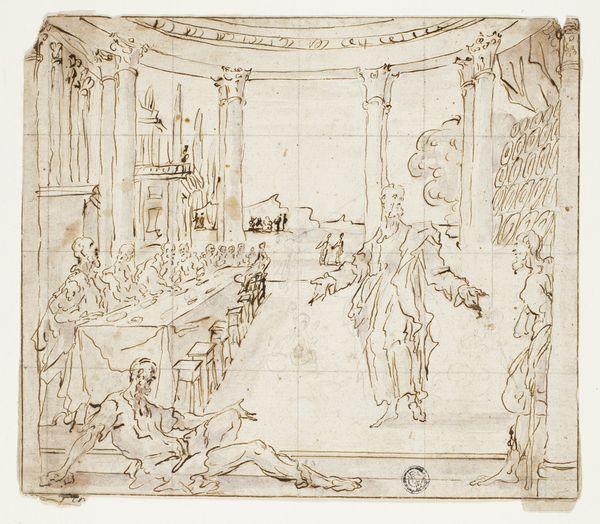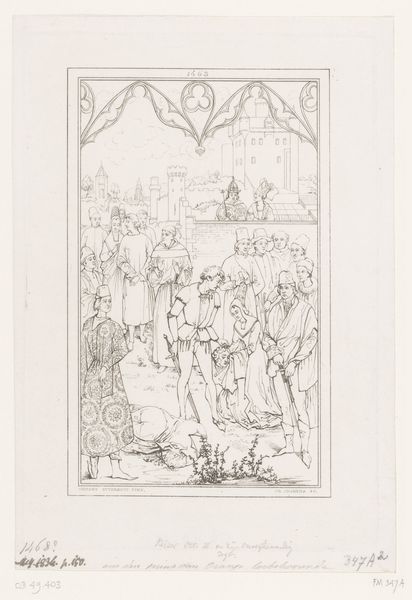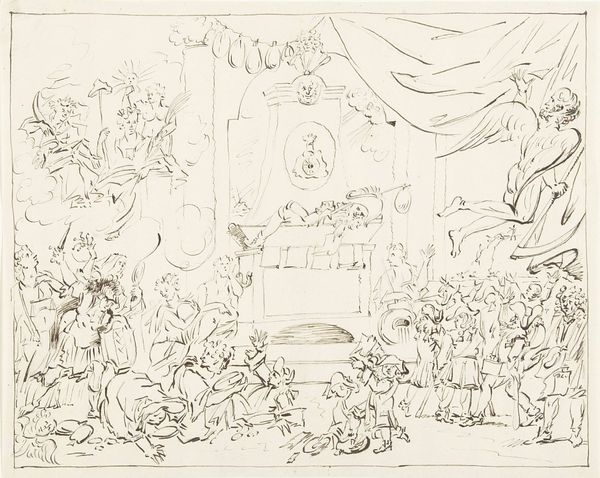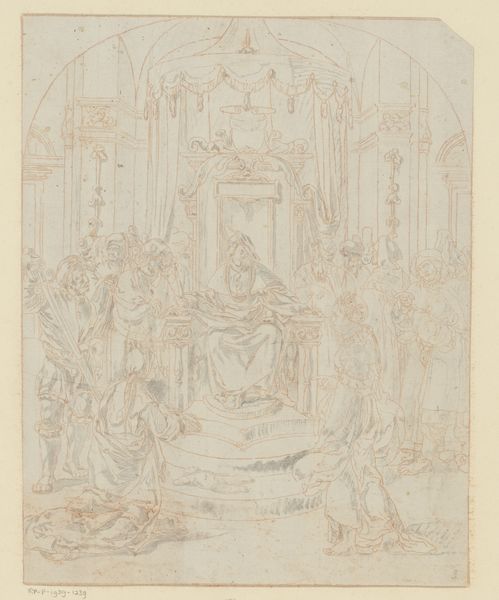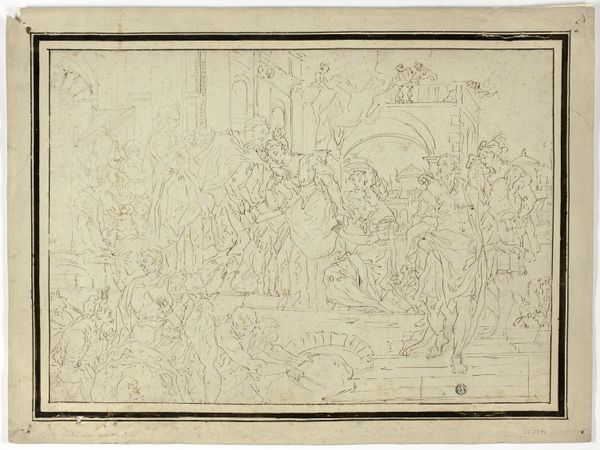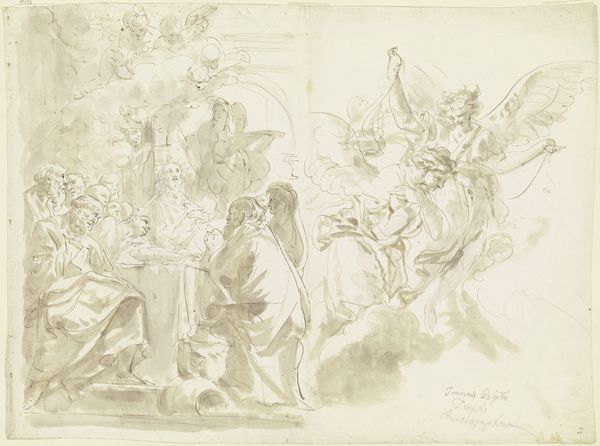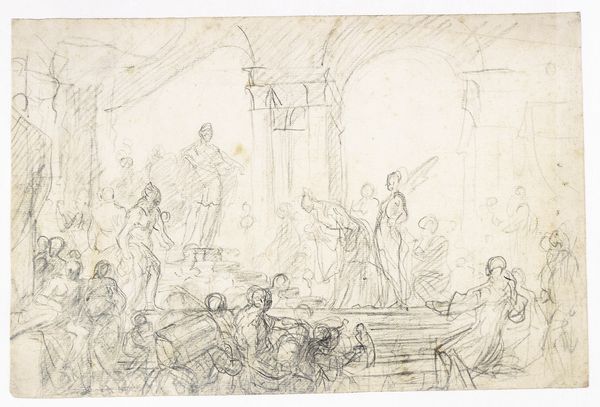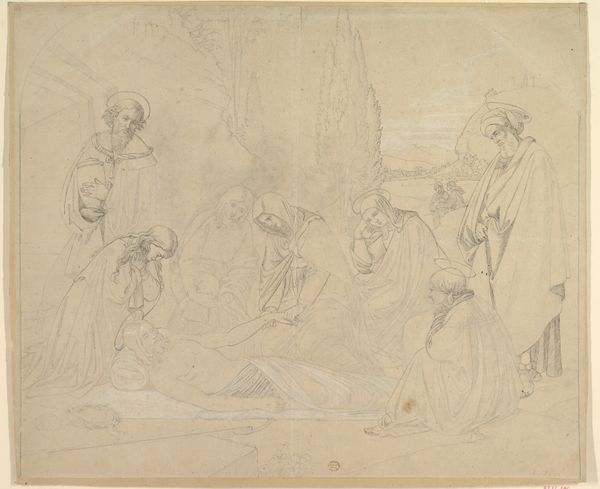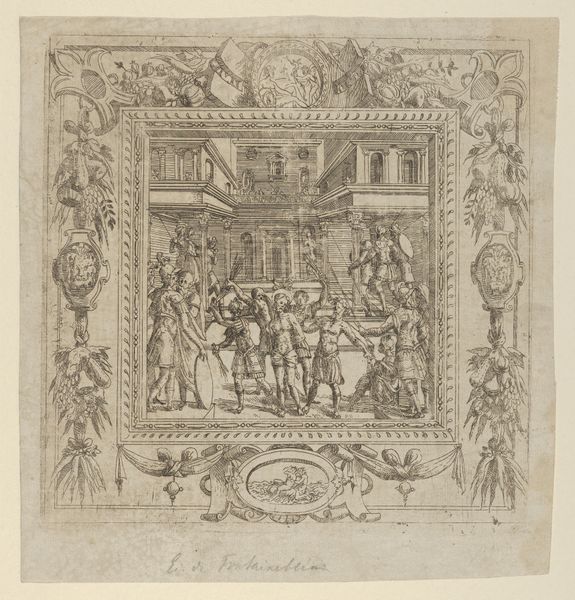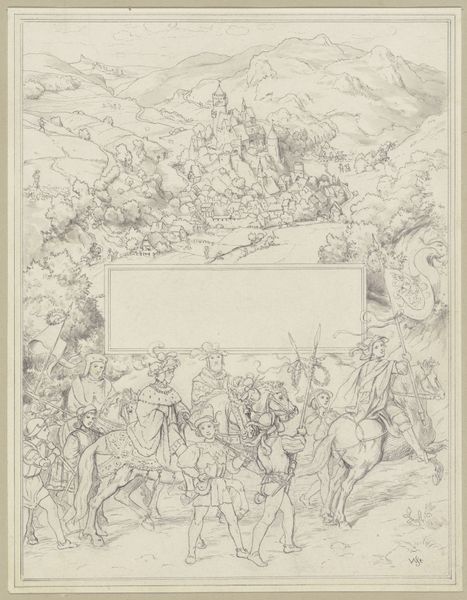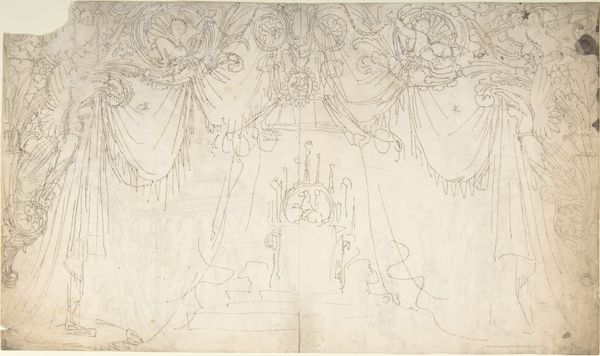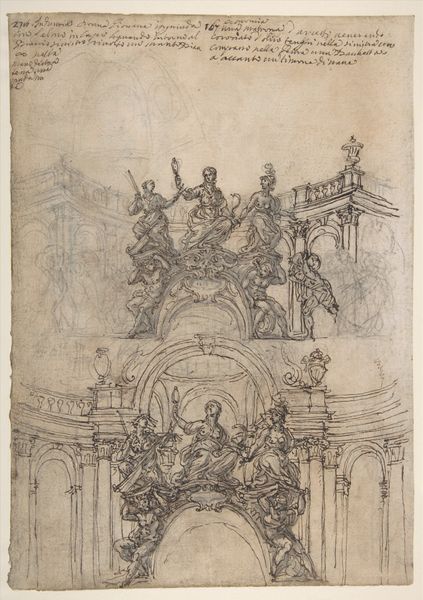
Germania bringt dem deutschen Volk die Freiheit (Entwurf zu einem Transparent für das Parlament) 1848
0:00
0:00
drawing, ink
#
drawing
#
pen illustration
#
figuration
#
ink
#
romanticism
#
history-painting
Copyright: Public Domain
Curator: This drawing by Otto Cornill is titled "Germania brings Freedom to the German People, a Design for a Transparent for Parliament", made in 1848. The ink on paper reveals a very idealistic and somewhat chaotic depiction of a pivotal moment. What do you see at first glance? Editor: Movement! It feels like a stage full of actors, all clamoring for attention. There’s such energy bursting from this drawing, despite the fairly rigid material constraints of ink on paper, and the somewhat compressed compositions...you can feel the pressure and expectation. Curator: Absolutely. Cornill's hand captures the fervor of the 1848 revolutions beautifully. But for me, it's also the way he positions "Germania"—this allegorical figure—almost floating, bathed in celestial light. She's like a beacon, guiding the people forward. It speaks volumes about the artist's hopes for a unified and free Germany. It’s really quite moving, a sort of utopian vision. Editor: Indeed. Though the materiality contrasts sharply. This wasn’t created in some fine art vacuum; it’s a design, a blueprint for something larger. It draws our attention to the conditions of production, of art as labor, really. And it raises questions. Who was commissioning these designs? What kinds of artistic labor were available, and to whom? And did any of this utopian idealism actually lead to concrete change? Curator: Those are such incisive points. Knowing it was designed for a "transparent" banner transforms our understanding, doesn't it? It speaks to the very public nature of the art—it wasn't meant to be confined to a gallery, but to inspire the masses. And to your point about labor, the visible sketchiness adds to that raw sense of creation, a quickly realized outpouring of hope. Editor: And I think the choice of materials also highlights a dichotomy – cheap, mass-produced paper versus grand aspirations of “freedom.” Ink, easily transported, reproduced through cheap print methods. It shows us where the means to depict ‘Germania’ at this time existed, the possibilities and limits. Curator: It’s easy to fall into sentimentality when viewing something so emotionally charged. I appreciate you bring these elements down to earth, anchoring the lofty ideas to tangible realities. Editor: And I, your insights into Cornill's hopeful vision; reminding us that sometimes art springs from a very deep and earnest place.
Comments
No comments
Be the first to comment and join the conversation on the ultimate creative platform.
